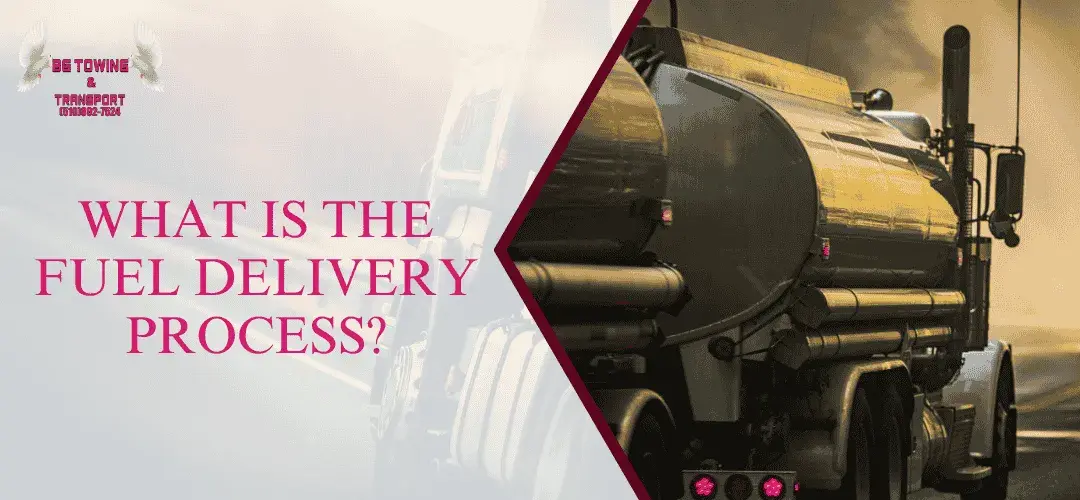The fuel delivery process is critical to modern energy management, ensuring that vehicles, machinery, and facilities receive the necessary fuel to operate efficiently. This process involves several stages, from sourcing the fuel to its final delivery at the designated location. Understanding how fuel delivery works is essential for consumers and businesses, particularly those reliant on diesel and bulk fuel delivery services.
At the outset, fuel is stored in large tanks and sourced from refineries or fuel depots. Once an order is placed, the fuel delivery service mobilizes a fleet of specialized trucks equipped with storage tanks and pumps. The service includes diesel, gasoline, and other specialized fuels. As mentioned, the trucks are designed to transport various fuel types.
Refueling as a process involves the strategic management of the supply chain, both in planning and implementation. The delivery routes are optimized to minimize travel time and fuel consumption, ensuring timely and efficient service. The fuel delivered to the delivery site is then unloaded from the truck into the customer’s storage tank or straight into the equipment. This process is closely monitored to reduce the risks and check adhesion to the requirements.
In addition to traditional fuel delivery services, technological advancements have led to the development of tools that help diagnose fuel delivery systems. These tools can identify issues within the system, ensuring that it operates smoothly and efficiently. For businesses that rely heavily on fuel, such as construction companies or transportation fleets, understanding the fuel delivery process is vital for maintaining operations and minimizing downtime.
The fuel delivery process encompasses sourcing, transportation, and fuel delivery, focusing on efficiency and safety. Understanding this process is essential for effective energy management, whether heating oil or bulk fuel delivery for a construction site.
How Does Fuel Get Delivered?
Fuel delivery begins with the sourcing of fuel from refineries or storage facilities. These facilities are equipped to handle large quantities of fuel and are strategically located to meet the demands of various regions. When a customer orders fuel delivery, the process is initiated.
The fuel delivery service typically employs a fleet of trucks designed explicitly for transporting fuel. These trucks have specialized tanks that can safely store and transport different fuel types, including diesel and gasoline. The trucks also have pumps and hoses for easy fuel transfer at the delivery site.
Once an order is confirmed, the logistics team plans the delivery route. This planning is crucial, as it helps to optimize fuel consumption and reduce delivery times. Advanced routing software may ensure the most efficient path, considering traffic, road conditions, and customer location.
Upon arrival at the delivery site, the driver must follow specific safety protocols. These include checking the site for potential hazards and securing the delivery area. The fuel is transferred from the truck to the customer’s storage tank or directly into their machinery. This transfer process is monitored closely to prevent spills and ensure compliance with environmental regulations.
In summary, fuel delivery involves a well-coordinated process encompassing sourcing, transportation, and safe fuel delivery. The efficiency of this process is critical for businesses and consumers alike, ensuring that they have the fuel necessary for their operations.
What is the Method of Fuel Delivery?
The method of fuel delivery can vary based on the type of fuel, the delivery service, and the customer’s specific needs. Generally, there are two primary fuel delivery methods: scheduled and on-demand.
Scheduled deliveries are pre-arranged based on the customer’s needs. Businesses that rely on consistent fuel supply, such as construction companies or farms, often opt for scheduled deliveries. This method allows for better inventory management, as customers can plan fuel usage around the delivery schedule. The delivery service will monitor the customer’s fuel levels and proactively schedule deliveries before running low.
On-demand deliveries, however, are more flexible and cater to immediate needs. Customers can order fuel anytime, and the service will dispatch a truck to deliver the fuel as quickly as possible. This method is beneficial for emergencies, such as when a generator runs out of fuel during a power outage or when a vehicle unexpectedly requires more fuel.
In addition to these methods, the fuel delivery process may utilize technology to enhance efficiency. For example, GPS tracking systems allow customers to monitor their real-time delivery status, providing transparency and peace of mind. Moreover, advanced fuel management systems can help diagnose issues within the fuel delivery system, ensuring optimal performance.
Fuel delivery methods are designed to meet customers’ diverse needs, whether they require a consistent fuel supply or immediate assistance. Understanding these methods can help customers make informed decisions about fuel delivery services.
What Does the Fuel Delivery System Do?
The fuel delivery system is a crucial component of any vehicle or machinery that relies on fuel for operation. Its primary function is to transport fuel from the storage tank to the engine or combustion chamber, which is mixed with air and ignited to produce power.
In vehicles, the fuel delivery system typically consists of several components, including the fuel tank, fuel pump, fuel filter, and fuel injectors. The process begins when the fuel pump draws fuel from the tank and sends it through the filter, removing any impurities affecting engine performance. Once the fuel is filtered, it is delivered to the fuel injectors, which atomize the fuel and mix it with air before it enters the combustion chamber.
The fuel delivery system in diesel engines operates slightly differently. Diesel fuel is injected directly into the combustion chamber under high pressure, allowing for efficient combustion. This process requires precise timing and control to ensure optimal engine performance and fuel efficiency. Advanced fuel delivery systems may also include sensors and electronic control units that monitor various parameters, adjusting the fuel delivery as needed to meet changing conditions.
Understanding the fuel delivery system is essential for businesses that rely on bulk fuel delivery to maintain equipment and ensure operational efficiency. Regular maintenance and diagnostics can help identify potential issues within the system, preventing costly downtime and repairs. Tools designed to diagnose fuel delivery systems can provide valuable insights, allowing operators to address problems before they escalate.
In summary, the fuel delivery system plays a vital role in the operation of vehicles and machinery, ensuring that fuel is delivered efficiently and effectively. Understanding how this system works can help users optimize performance and maintain their equipment.
How Does a Fuel Delivery Module Work?
A fuel delivery module is a structured assembly where several fuel delivery system components work closely together. This module typically includes the fuel pump, fuel filter, and fuel level sensor, all housed within the fuel tank. Its design allows for efficient fuel management and ensures the engine receives a consistent fuel supply.
When the engine is started, the fuel delivery module activates the fuel pump, which draws fuel from the tank and sends it through the filter. The filter removes contaminants, ensuring that only clean fuel reaches the engine. The fuel level sensor continuously monitors the amount of fuel in the tank, providing real-time data to the vehicle’s onboard computer. This information is crucial for managing fuel consumption and alerting the driver when fuel levels are low.
In modern vehicles, fuel delivery modules are often equipped with advanced technology, such as electronic control units (ECUs) that optimize fuel delivery based on driving conditions. These systems can adjust the fuel pressure and flow rate, improving fuel efficiency and reducing emissions. Some fuel delivery modules also include diagnostic capabilities, allowing for early detection of issues within the fuel system.
For businesses that rely on diesel fuel delivery, understanding how a fuel delivery module works can help maintain equipment and ensure optimal performance. Regular inspections and maintenance of the fuel delivery module can prevent issues that could lead to costly repairs or downtime.
In conclusion, a fuel delivery module is a critical component of the fuel delivery system, integrating various functions to ensure efficient fuel management. Understanding its operation can help users optimize fuel delivery processes and maintain their equipment effectively.
FAQs
Is delivering fuel hard?
Delivering fuel requires specialized training and adherence to safety regulations, but with proper procedures in place, it can be managed effectively.
Is it illegal to provide an emergency fuel delivery service?
No, providing emergency fuel delivery services is legal, but operators must comply with local regulations and safety standards.
Can fuel be delivered?
Yes, fuel can be delivered through various services, including scheduled and on-demand deliveries, catering to residential and commercial needs.



